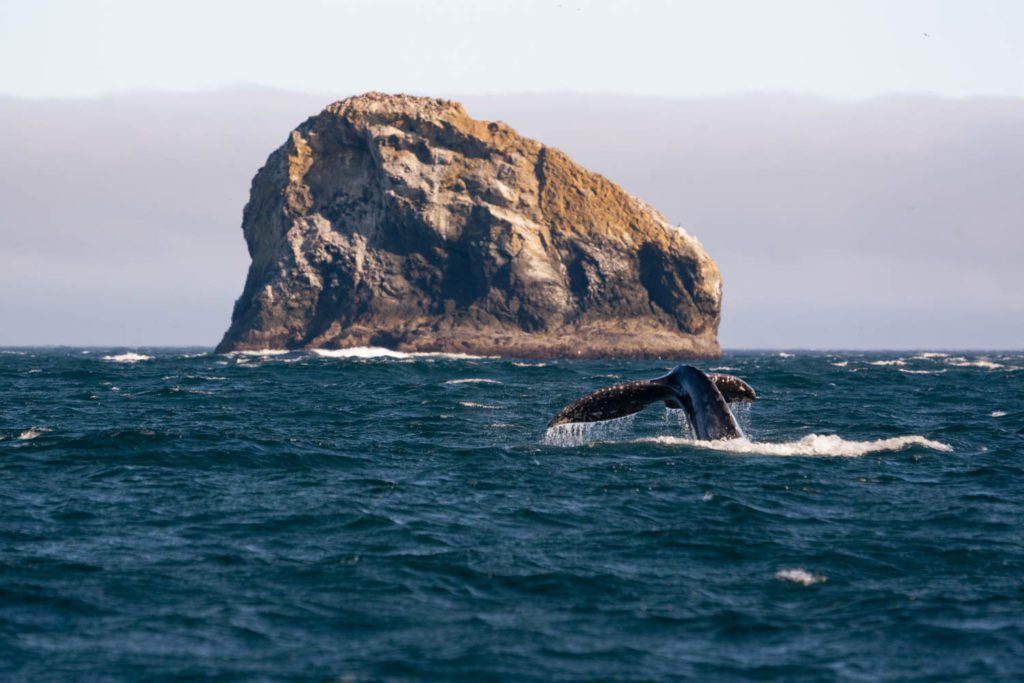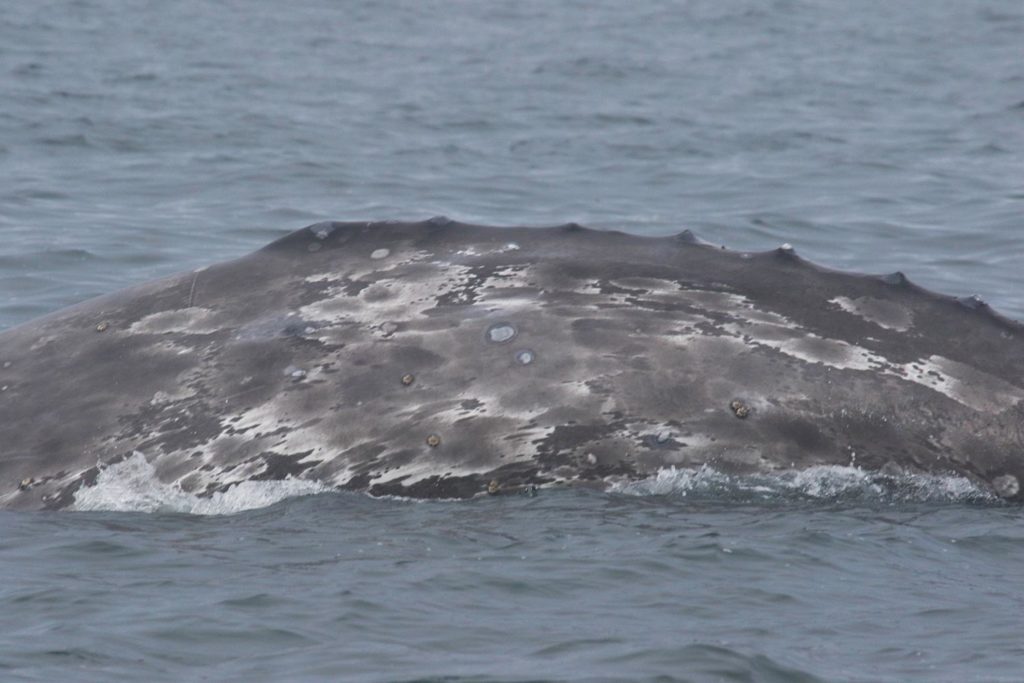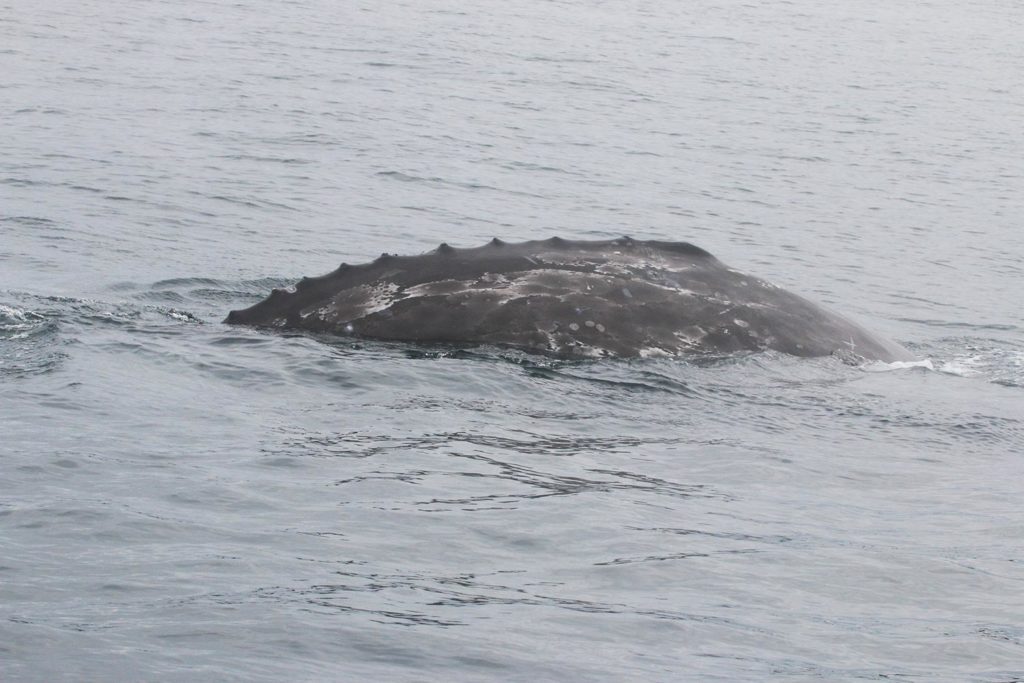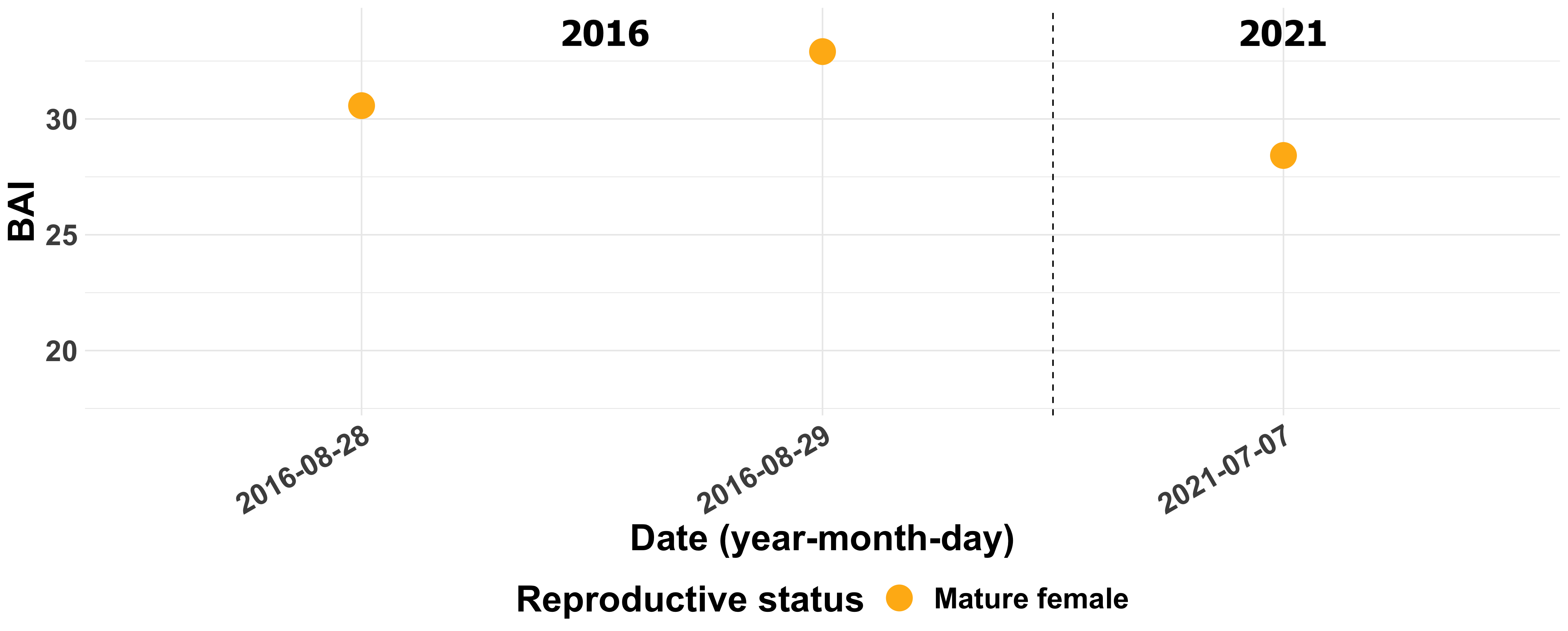We have seen Moby Dick many times along the Oregon coast during our research efforts since 2016, both in our Newport/Depoe Bay study region and near Port Orford. But her data history goes back further, as the WHET Lab in the Marine Mammal Institute at OSU satellite tagged her in 2009. In this animation (to the right), you can watch a portion of Moby Dick’s trackline as she moves between multiple locations along the Oregon and Northern California coast. After being tagged near Newport, she moves south to Port Orford, then heads back north to Newport, then back to Port Orford – all within 17 days! That’s a lot of commuting. Of our 26 sightings of Moby Dick since 2016, exactly half (13) have been in Port Orford and the other half in the Newport/Depoe Bay region, which demonstrates Moby Dick’s broad habitat use as she searches and forages across the Oregon coastline.
We have observed Moby Dick feeding with many different tactics, including headstanding, side- swimming, bubble blasts below the water, and sediment streaming from her mouth at the surface. Gray whales in Oregon feed on multiple zooplankton species using many different tactics to capture their prey. Watch this video (see below) to see some of Moby Dick’s foraging behaviors we have documented from drone footage, and you’ll understand why we call gray whales “bendy whales”. You can also learn more about how we study gray whale behavior and what we are learning at this project webpage.





